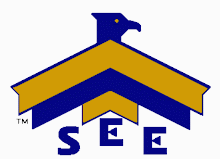Most managers and leaders are familiar with the common organizational analysis tools of SWOT and Gap but these tools are largely ineffectual when not properly segmented. Using a segmented approach will deliver greater value to these time worn tools.
SWOT is an acronym for strengths, weaknesses, opportunities and threats. When performed normally, this type of analysis yields almost cursory and useless results. Typical responses when looking at an organization as a whole include comments about having good people (a strength), lacking suitable space (a weakness), growth of a business in a strong economic market (an opportunity) or the presence of a competitor (a threat). This provides a brief snapshot of where an organization is and what might be on the horizon in very high overview. This approach contains only the singular dimension of flat area.
Gap analysis is even more of a simplistic approach. It is linear and clearly defines where an organization is and where it wants to be. The gap between the then and now represent a self-writing action plan when a company identifies how to move from the now to the future. Like SWOT, it is flat and, unique to gap, it is a single straight line.
Now imagine these analysis tools in three dimensions with depth and breadth added. That is what adding segmentation to these tools will achieve. Starting with SWOT, instead of looking at the organization as a whole, segmentation forces the same analysis except broken down in the key operating areas of the company. First the organization defines the key operating areas and many of those are common to all organizations. Typical ones include human talent, financial, facilities, technology, core products and services and regulatory or legal issues.
For example, the training department at High Stakes Motors wants to begin the strategic planning process for 2008 and rather than beginning with a SWOT analysis of the department, they segment their approach and begin with the people in the department. They determine that there are some core strengths and individuals who could be called strong. They also determine there are some general deficiencies and weaknesses among their staff. They look at opportunities to improve personnel skill levels and cross-train key team members and they identify the threats of organizations that have higher compensation or benefit packages. From this view, the management team for the training department at High Stakes Motors can craft a 2008 plan that capitalizes on their strengths, addresses the weaknesses, captures some opportunities and strategically positions to minimize the threats.
Wash, rinse and repeat for all the major segments of the High Stakes Motors training department for all aspects of their operation including their facilities, the technology used, strategic partnerships, financial structure and core training offering. The end result is a significantly more detailed, more useable and more reliable way of looking at this operation.
Now imagine a Chia pet. One that has been watered and is beginning to grow a bit. That is what we are going to create instead of a linear gap analysis. With the center point of segmented gap being the “where we want to be” mark, the lines out from that point will represent where we are based on the same segments used in the segmented SWOT analysis. So, for the High Stakes Motors training department we have one line to the center for technology, one for human talent, one for core products and services offered, one for customer service level, one for facilities and so forth. Each line begins at a different spot because, as in most organizations, these segments are in different stages and degrees of closeness to the ideal.
The really helpful part of segmented gap analysis is that it allows for the construction of simultaneous action planning and action plans that can be interdependent upon other action plans. So rather than approaching the organization linearly, the organization is viewed in full three dimensions and strategic planning can be built to attack all segments at once.
Is a segmented approach more difficult and time consuming? Absolutely but the results will dramatically improve the ability of an organization to plan effectively for the coming years.
Gap and SWOT analysis have been around for a long time and are great strategic planning tools. Tools and not the end game. A common misconception in strategic planning is that gap and SWOT analysis are a result and not a tool to help achieve a results.
In it’s most simple form, gap analysis is a view of where we are, where we want to be and mapping a process of how to get there. This can be a powerful process when crafting strategic objectives and actions plans. It is also extremely helpful in the honest assessment of where an organization or department is currently performing.
SWOT analysis is a little more in-depth and detailed. It helps identify strengths, weaknesses, opportunities and threats (thus the SWOT). This too, is very powerful, especially when identifying action plan items.
Effective leaders embrace and use these tools in a collaborative and participatory manner within the overall strategic planning process.
Subscribe to:
Post Comments (Atom)






No comments:
Post a Comment